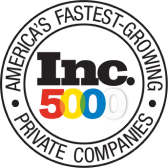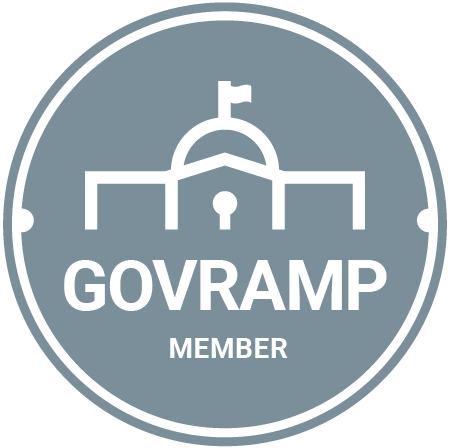
Your reaction to the words “Agile Procurement” may be “wow, what a boring topic.” In fact, when we talk with CIOs, Agency Leaders, Procurement Officials inside government they tell us that the number one barrier they have to modernizing government by introducing new technologies is a procurement process that – quite frankly – cannot keep up with the pace of technology innovation.
Our mission as a company here at Authorium is to change how procurement gets done, through a combination of enterprise applications designed to make it faster and easier for the people charged with building complex solicitations inside government to get their work done with less time and effort, and programs that enable governments to experiment and succeed with new methods of procurement.
The notion of bringing Agile Procurement into government settings is neither radical nor new; in many ways this is a continuation of the great work done by 18F and others to bring design thinking and agile methodologies to technologists working inside government.
Agile Procurement Defined:
Our definition of Agile Procurement is an iterative approach to technology acquisition, where the focus is on cutting the time and effort required for innovation and digital transformation.
Agile procurement can include:
sprints, burn down charts, continuous value delivery, collaborative teams process
Currently, we are working with CIOs, Agency Leaders, and Procurement Officials to bring the agile mindset to the people tasked with technology acquisition inside government, acting as consultants to help with the re-engineering of the technology acquisition process.
And as of September 15, 2020, we make enterprise applications to turbocharge workflows around the creation of complex solicitations – many of which involve RFPs – as needed to make the technology acquisition process inside government better match the pace of technology.
The ultimate benefit we seek with our work is to give government access to the innovative technologies they need at the best price possible.
Going agile with procurement is not new for us here at Authorium.
We are the same people who co-designed and consult on a Challenge-Based Approach to innovation as well as making vendor contracts piggyback-able across multiple jurisdictions as two additional approaches in acquiring innovative technology from innovative companies.
What’s new is that we are growing our team and able to turn our time and attention from innovative forms of procurement to making traditional procurement work better. As needed to modernize government to better serve the people. Also, to build in greater resilience in the face of disasters like the recent wildfires and COVID-19.
Traditionally, before any technology can be purchased to modernize government, a budget must be allocated; research must be done both to gather requirements and understand the market and field of potential vendors. This research is then codified in a solicitation that describes the specific requirements that must be met by a group of vendors wishing to supply technology to the government. Often the vendors are pre-qualified based on the criteria set in the solicitation.
Solicitations can take many forms and run from the simple RFIs (request for information) to the complex RFPs (request for proposals). Complex solicitations can run into 100s of pages with 10-20 exhibits and attachments, many of which are boilerplate to ensure the solicitation complies with rigorous purchasing regulations.
“When procurement goes well, almost no one notices. The urgency that sparked the technology acquisition is long gone. So one objective I had is to speed up the process, so that technology is acquired closer to when the need first surfaced, not 24 months after the fact. So … while procurement wasn’t part of my job description … it was something I had to care about. Modernizing procurement … became a bit of a rallying cry for me personally. I’ve seen too many technologies acquisitions go awry because they took so long that the requirements specified were obsolete the date the RFP was solicited.” – former Deputy CIO for a major state
While no one tracks this statistic exactly, we know from talking to CIOs, Agency Leaders, and Procurement Officers inside government that complex solicitations can take 12-18 months to prepare and involve a team of 10-15 contributors. Sadly – once these solicitations are proffered – they are often immediately out of date. Vendors don’t always know how to answer them because the requirements detailed were prepared with a knowledge of what was possible with yesterday’s technology, not today’s.
“I just got a notice that [PRODUCT NAME] was approved for purchasing on a blanket purchasing authority issued by the State. This would be a good thing except that [PRODUCT NAME] was discontinued 14 months ago. There are several new products that meet or exceed the requirements and at least one of them is available at a lower price. But the State cannot buy it because only the older product is price listed.” – former Purchasing Manager, major technology company
Fixing this isn’t easy. And it is important. To the extent we can streamline traditional procurement, the benefits both to government and the people it serves could be huge. Access to more modern technologies. At a reduced price. Greater innovation. Faster digital transformation.
Authorium is committed to modernizing the technology acquisition process used inside government, to drive more innovation and digital transformation. Working with one large client, we developed Solicitation Builder, an enterprise-class application to speed up workflows that:
We’ve seen clients use Solicitation Builder to cut the time required to author a complex RFP from 18 months to 90 days. Our goal with Solicitation Builder is to allow government to move at the pace of technology when it comes to technology acquisition.
We are still the same great company headed up by Jay Nath (Co-CEO & Founder), former CIO of the City of San Francisco, and Kamran Saddique (Co-CEO & Founder), experienced govtech executive. Andrew Culver joins as CTO and Founder. Marcia Kadanoff (that’s me) joins as CMO.
We still believe that one small team can change the world for the better. At Authorium, in addition to our enterprise-class applications, we run two programs that act as change agents:
Excellent overview of agile procurement borrowing from software development
Good rundown on the pace of technology change from Nature Magazine
Learn more about our enterprise software products starting with Solicitation Builder
Get our newsletter
© 2025 Authorium, Inc. All rights reserved.

